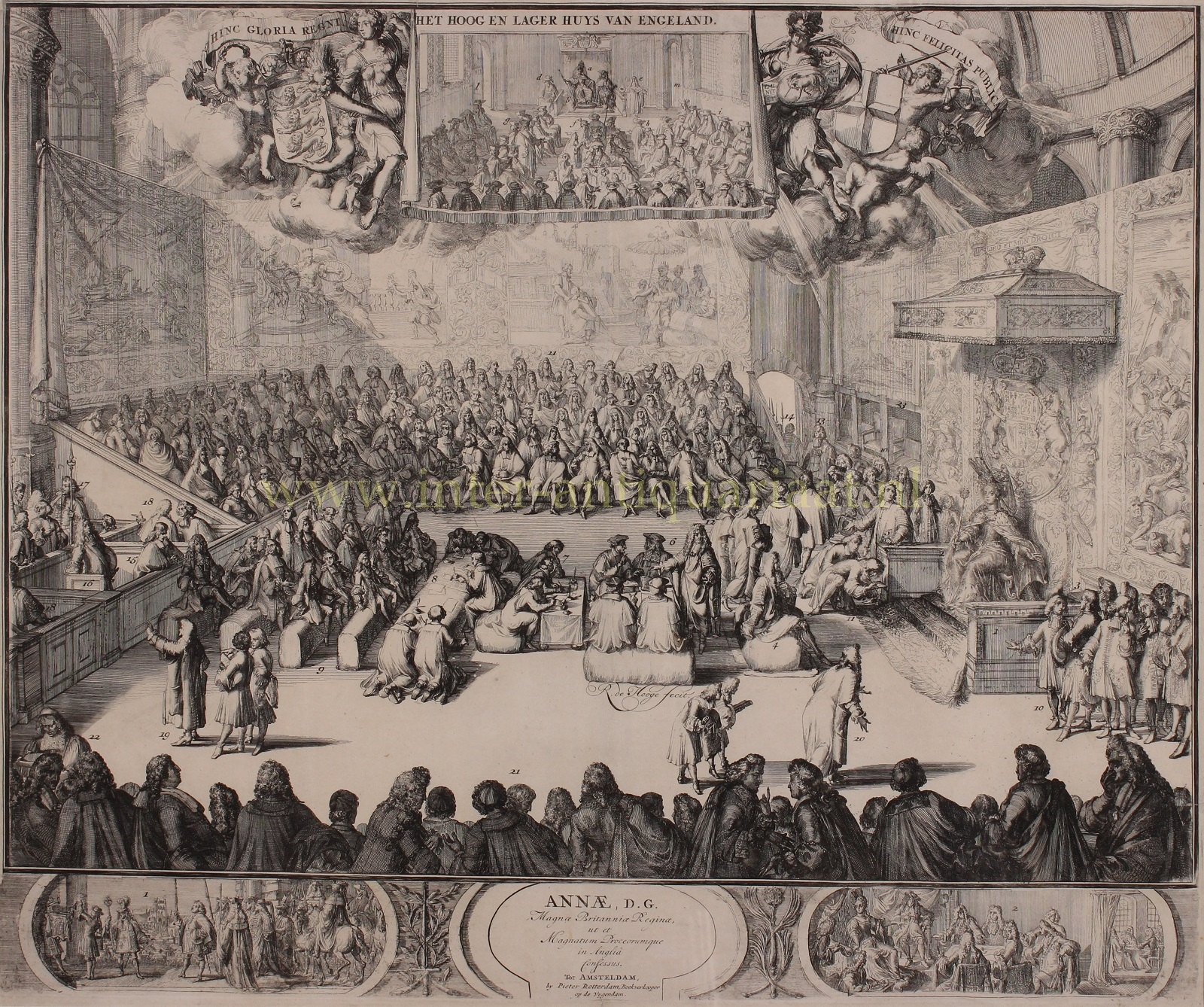“Annae, D.G. Magnae Brittaniae Reginae, ut et Magnatum Proceorumque in Anglia Confessus”, etching made by Romeijn de Hooghe in 1702 and published by Pieter Rotterdam. Size: 48 × 57,5 cm.
Anne, Queen of Great Britain (1665-1714), was the daughter of King James II. James was deposed during the Glorious Revolution, after which William III of Orange became king and his wife Mary (Anne’s older sister) became queen. William III died on March 8, 1702, and Anne became Queen of England and Scotland. She was crowned on April 23 at Westminster Abbey.
She was immediately popular. In her first speech to the English Parliament, on 11 March, she distanced herself from her late Dutch brother-in-law and said, “As I know my heart to be entirely English, I can very sincerely assure you there is not anything you can expect or desire from me which I shall not be ready to do for the happiness and prosperity of England.”
Here we see a session of the House of Lords with Queen Anne on throne; above, two figures representing Plenty (with a cornucopia) and War (with a shield) hold a scroll on which is shown the Queen with Prince George of Denmark besides her presiding over the Commons; below the main scene are two smaller scenes: on the left the heralds proclaiming the Queen, and on the right, the Queen in Council.
Literature: Frederik Muller “De Nederlandsche geschiedenis in platen : beredeneerde beschrijving van Nederlandsche historieplaten, zinneprenten en historische kaarten” (1863-1882), vol. IV, p. 249, no. 2738b.
Price: Euro 450,-


